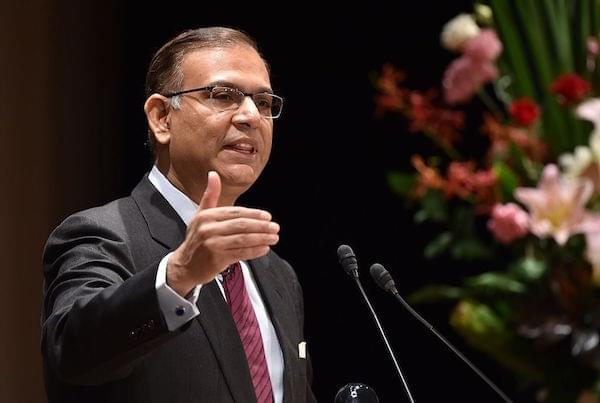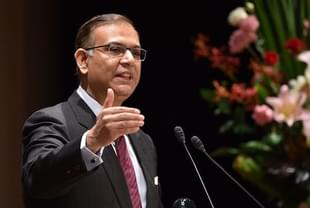Insta
Sinha Vs Sinha: Seven Structural Reforms And Initiatives That Yashwant Sinha Did Not Take Into Account
Swarajya Staff
Sep 28, 2017, 12:31 PM | Updated 12:31 PM IST
Save & read from anywhere!
Bookmark stories for easy access on any device or the Swarajya app.


In response to his father’s article in the Indian Express, which predicted a hard landing for the government, Minister of State for Civil Aviation Jayant Sinha has said that commentators are drawing “sweeping conclusions” from a narrow set of facts, without taking into account the fundamental structural reforms that are transforming the country’s economy.
Writing in the Times of India, Sinha pointed out seven major structural reforms and initiatives that commentators, including his father, have not taken into account while analysing the current state of the Indian economy.
The reforms and other efforts that Sinha points to include Goods and Services Tax (GST), demonetisation, digital payments, new Foreign Direct Investment (FDI) regime, Jan Dhan-Aadhaar-Mobile (JAM) trinity and Bankruptcy Code.
According to Sinha, one or two quarters of GDP growth and other macro data are inadequate to evaluate the long-term impact of the structural reforms underway.
Sinha writes that reforms such as GST and push for digital payments will bring the informal sectors of the economy are now being brought into the formal sector and in the tax net. “In the long term, formalisation will mean (a) tax collections go up and more resources are available to the state; (b) friction in the economy is reduced and GDP goes up, and (c) citizens are able to establish credit more effectively as transaction records are digitised,” he has stated.
A streamlined FDI regime and dismantling of Foreign Investment Promotion Board, he says, is helping make the economy even more open. “FDI has accelerated from $36 billion in FY2014 to $60 billion in FY2017,” he mentions.
The Jan Dhan-Aadhaar-Mobile (JAM) trinity, he points out, has helped the government reduce leakages through schemes such as Direct Benefit Transfer. “Rs 1.75 lakh crore of benefits have been transferred directly to beneficiaries over the last three years. JAM is weeding out many ghost and fake beneficiaries,” he says.
Talking about the Bankruptcy Code, he says policy-making across ministries has become thoroughly rules-based. “The code will enable speedy resolution of stressed assets providing relief to NPAs in the banking sector,” he writes.
He also points out to other initiatives taken by the government, including Atal Innovation Mission, rural electrification mission and infrastructure push.





